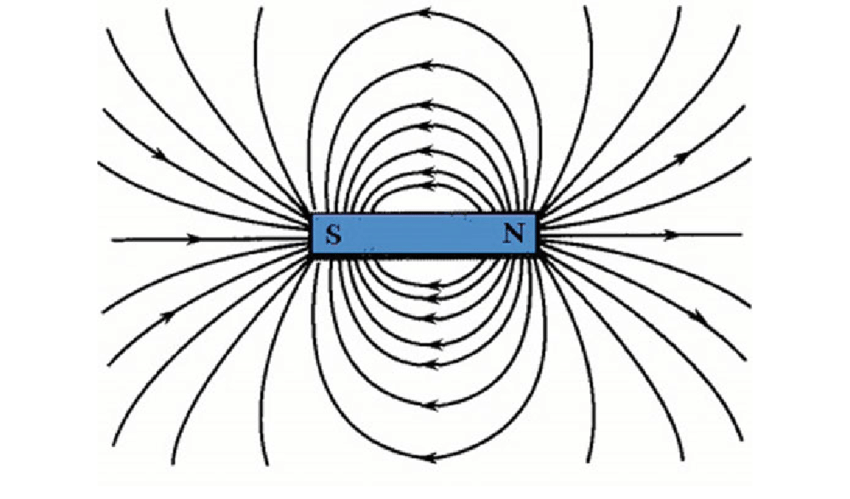Mood Brightener: ...more from Stay Homas. (Confination XV)
Magnet Concepts:
In our daily lives our sense of magnets and charge overlap in some ways and are remarkably different in other ways. We often confuse poles with charges and both objects seem to share this idea of fields. At a conceptual level the goal is to be clear how magnetic phenomena are different from charge phenomena and where the similarities are.
Are they different phenomena?
In a classroom setting we would definitely spend some time talking about this to get you to connect with your actual experiences in the world. We would eventually end up with an experiment to test whether charges and magnets are the same phenomena. Imagine, if you will, a balloon with plenty of charge on it as we learned about in our tape and balloon experiments. If we brought a magnet near that charged balloon would we expect to see the balloon attracted to the magnet? Since a charged balloon is attracted to everything how would we be able to tell if it was attracted differently?
[compare the attraction of the magnet to the attraction of a similar bit of aluminum]
With some effort we can show that charged objects are not attracted to magnets (either N or S end) at least in a static (non-moving) setting. This suggests that they are distinct phenomena worthy of individual study.
Basic Magnet Rule:
Opposites attract and likes repel which is the same as we found for electrostatics. This does suggest that there may be a deeper connection between these two phenomena but that will wait for a future day.
On the other hand lets follow this a little further. We can the two poles of a magnet N and S. If you pull out your scout compass which end of the compass points N? Don't we usually call that the north end of the magnet? If that's the case which end of the earth's giant magnet lives up there near the North Pole with Santa Claus? Oddly, that must mean that it is the South end of a magnet that lives near the north geographic pole of the planet. Good to know!
Half a Magnet (Monopoles):
Since a magnet has a N and S pole it is a dipole in the same sense that a +q and -q some distance from each other form an electric dipole. An electric dipole we can disassemble into separate +q and -q charges. What happens if we try to do that with a magnet. If you try it by breaking a magnet in half over and over again what you find is there are no 'half a magnets'! Every time you break a magnet in half you get two smaller magnets. Even if you pound the magnet into dust each spec of dust will still be a magnet. In fact, all the way down to the atomic level the atom is either a magnet or not but never 'half a magnet'.
I often point out to students if they ever find a monopole (half a magnet) in the wild they should drop it in a box and go immediately to Stockholm to pick up their Nobel Prize. There are some theories that suggest that there might be such a think as a magnetic monopole but nobody as seen it yet. If you're interested in such things here is a short discussion from a scientist at CERN discussing the hunt for magnetic monopoles.
Basic Magnetic (Dipole) Field:
Not surprisingly the magnetic field of a magnet (two poles or a dipole) looks exactly like the E field of a dipole in shape and form. We label this field the B field (M is reserved for another aspect of magnetic fields). The N pole of the magnet is 'like' a positive charge in that the B field points away from the N pole. The only place where things are a bit less clear is the question of the B field (magnetic field) inside the bar magnet between the two poles. We will let this question float for now but don't forget it entirely.

Magnetic Materials:
In much the same way we have material properties relative to charges (insulators and conductors) there are a range of material properties relative to magnets. Most materials show some level of magnetic behavior even if quite small. The three types of magnetic behavior are ferromagnetic, paramagnetic, and diamagnetic. Ferromagnetic behavior is the one we are most used to. The others are less obvious so I am embedding a nice video that covers these topics nicely.
Down at the level of atoms and quantum mechanics this gets much more complex but if you want to go a little ways down that rabbit hole here is Derek Muller (Veritasium and Minute Physics) to explain.....
Ferrofluids:
In this day and age I would be remiss if I didn't at least tip my hat to the trove of beautiful videos out there that use all of the above concepts and a fluid with suspended ferromagnetic material to visualize the magnetic fields around different objects.
Here's a longer exploration of making sculpture with ferrofluids...
Assignment Breadcrumb Reading: Bb Test
Earth's Poles:
What magnetic pole (N or S) is near the surface of the earth in Antartica (that's the South end of the planet!)? Why?
Before Next Class:
No Homework for this Breadcrumb!
Looking Ahead:
Look ahead to the next Breadcrumb: Magnetic Forces
Assignment Breadcrumb Reading: Bb Test
Why No Force Law Between Magnets:
All the other times we've started talking about forces we began with a rule describing the forces between sources of that force. F = mg, F = kqq/r2, F = -kx, and so on. Why not in the case of magnetic forces?
